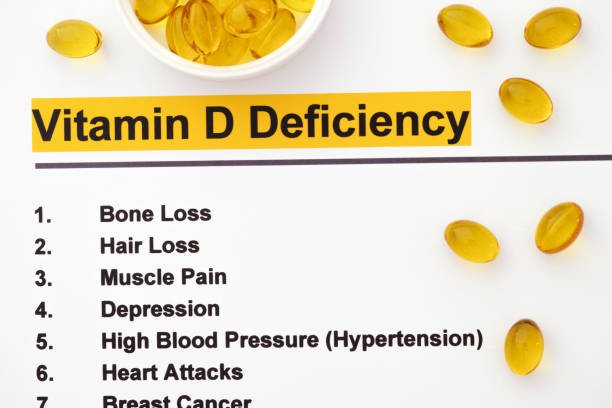Of the 13 essential vitamins, vitamin D may be one of the most unique.
It is one of the few vitamins that your body can produce itself. Well, almost per se. It needs a little help from the sun, so it’s often referred to as the sunshine vitamin. You can also get vitamin D through your diet.
But you may feel the effects of low vitamin D. When you don’t make it or get enough of it,
Vitamin D deficiency has become increasingly common over the past decade or so. This is concerning because a vitamin D deficiency can affect a person’s health and well-being, says Dr. Donald Brown, a primary care practitioner at Houston Methodist.
If left untreated, vitamin D deficiency can lead to osteoporosis in adults, rickets in children, and adverse outcomes in pregnant women. It may also be linked to heart disease, diabetes, and cancer – although more study is needed on this topic.
And although a little sunshine may seem like a simple answer to ensuring you get enough low vitamin D every day, be careful. It’s a little more complicated than that.

What are the symptoms of vitamin D deficiency?
Vitamin D plays many important roles in your body, including helping to:
- Maintaining the strength of bones and teeth
- Promote proper muscle function
- Facilitate communication between your mind and body
- Fight infection
- Given these important responsibilities, it’s no surprise that vitamin D deficiency can lead to health consequences.
However, he also points out that immediate signs are not always noticeable in adults until the deficiency becomes severe.
Symptoms of vitamin D deficiency can include:
- fatigue
- Muscle weakness and/or pain
- Joint pain
- depression
If you notice these signs, talk to your doctor, who can use a blood test to evaluate your vitamin D levels and advise whether you are deficient and may need to take supplements, Dr. recommends. Brown. Regardless of whether you suffer from these symptoms or not, your doctor will check your vitamin D levels annually.
Why does vitamin D deficiency occur?
There are several reasons for low levels of vitamin D in an adult, including:
- Aging – The skin’s ability to produce vitamin D decreases over time
- Lack of exposure to sunlight – Your body only produces vitamin D when your skin is exposed to sunlight
- Having dark skin – Skin tone affects the amount of vitamin D that is secreted during exposure to the sun, as lighter-colored skin facilitates the production of the vitamin more than dark skin.
- Vitamin D deficiency in the diet – Although very few foods contain vitamin D naturally, many are fortified with it
- Health conditions that affect how well your body absorbs or processes vitamin D, including Crohn’s disease, celiac disease, ulcerative colitis, cystic fibrosis, obesity, and chronic kidney or liver disease
- Certain medications and medical procedures, such as laxatives, steroids, and medications taken to treat high cholesterol, seizures, or tuberculosis, as well as intestinal bypass surgery
It’s important to treat low vitamin D levels, but doing so requires working with your doctor to develop an effective and safe treatment plan. While reducing sun exposure can be a source of low vitamin D levels, increasing sun exposure as a source of vitamin D is not recommended as this can increase the risk of skin cancer.
What is vitamin D deficiency?
Vitamin D deficiency is a lower level of vitamin D in the blood than the normal rate, which negatively affects a person’s general health, especially bone and muscle health.
25-hydroxy-vitamin D, one of the main forms of vitamin D found in the blood, is usually relied upon as an indicator of the level of vitamin deficiency in the body.
Vitamin D deficiency is a global health problem, as approximately 1 billion people in the world suffer from vitamin D deficiency. In addition, approximately 50% of the world’s population suffers from a lack of sufficient vitamin D in the body.
Complications of vitamin D deficiency
The most serious complications of vitamin D deficiency include:
- Low levels of calcium in the blood
- Low levels of phosphate in the blood
- Rickets
- Osteoporosis
These conditions are treatable. Although rickets are a treatable and often curable disease, it is important to act quickly. Milder cases of rickets can cause long-term bone damage if left untreated, which may prevent bones from growing normally. Untreated, severe cases can lead to seizures, heart damage, and death.
Preventing vitamin D deficiency
The best strategy to avoid vitamin D deficiency is to get adequate low vitamin D from your diet and/or exposure to sunlight. Your age determines the required daily amount of vitamin D. However, it is important to mention that you should avoid spending too much time outdoors without sunscreen. The chance of developing skin cancer increases if you spend too much time in the sun

Causes of vitamin D deficiency
Causes of vitamin D deficiency and risk factors include:
Malnutrition
Infants and children are most susceptible to vitamin D deficiency caused by not obtaining it from food in sufficient quantities. Because breast milk contains small amounts of low vitamin D, most infant formulas also do not contain sufficient amounts of vitamin D.
As for adults, not paying attention to obtaining sources of vitamin D from foods that contain it, such as fish and egg yolks, may lead to vitamin D deficiency, especially in the elderly and people who follow a vegetarian diet.
Lack of adequate exposure to sunlight
Vitamin D is considered one of the vitamins that the body can produce naturally. Approximately 50-90% of the vitamin D present in the body is made in the skin, but the manufacturing process requires the skin to be exposed to sunlight.
Therefore, lack of exposure to sunlight to a sufficient extent and at the appropriate time often causes a decrease in the level of vitamin D synthesized in the body. Among the reasons that may lead to a lack of exposure to the sun:
- Do not leave the house frequently, or work in an environment that does not receive sunlight.
- Use sunscreen when going out.
- Wear long clothes, and body or head coverings.
- Winter, especially in countries where it is long.
People with dark skin are more susceptible to vitamin D deficiency resulting from insufficient exposure to sunlight, as the presence of melanin in the skin reduces the skin’s ability to manufacture vitamin D through sunlight.
Malabsorption of vitamin D from the intestine
Vitamin D deficiency can result from poor absorption from the intestine. Health reasons that lead to reduced absorption of low vitamin D from the intestine include:
- Short bowel syndrome.
- Celiac disease.
- Inflammatory bowel diseases, such as Crohn’s disease.
- Cystic fibrosis.
- Chronic pancreatic insufficiency.
- Performing a small intestine resection or gastric bypass.
- Obesity
- Because vitamin D is a fat-soluble vitamin, people with a BMI over 30 are at greater risk of developing vitamin D deficiency. Because fat cells extract the vitamin from the blood and store it inside them, this hinders the process of excretion and release into the blood, and it spreads to other parts of the body.
Kidney and liver diseases
Both the kidneys and liver contain many important enzymes, including those involved in the process of manufacturing vitamin D in the body or converting it to its active form.
Therefore, the presence of a health problem in the kidneys or liver, such as cirrhosis or kidney failure, may lead to decreased production of vitamin D in the body or failure to convert it to its effective form.
Taking some medications
Some medications increase the metabolism of vitamin D in the body. Vitamin D is metabolized and broken down in the body by several liver enzymes called cytochrome P450 enzymes. Therefore, taking medications that activate these enzymes leads to an increase in the rate of vitamin D breakdown and disposal, which leads to a decrease in its levels in the blood.
Groups most vulnerable to vitamin D deficiency
Some people are more likely than others to suffer from vitamin D deficiency, including:
- Infants.
- the elderly.
- Smokers.
- Pregnant and breastfeeding.
- People with dark skin.
- People with certain diseases, such as: thyroid disorders, sarcoidosis or tuberculosis, and some types of lymphoma.
What happens if your vitamin D is low?
Low vitamin D levels increase the risk of heart disease and death from this condition. Low levels of vitamin D may put people at greater risk of developing high blood pressure and diabetes. These conditions are risk factors associated with heart disease.
How can I raise my vitamin D level quickly?
Foods containing vitamin D
Fatty fish, such as salmon, mackerel, herring, sardines, cod, tuna, and bluefish.
Products fortified with vitamin D, such as milk, dairy products, orange juice, cereals, crops, and soy drinks.
Cow liver.
Swiss cheese.
Raw shiitake mushrooms.
yolk.
How long does it take to get your vitamin D levels up?
Building the level of vitamin D in the body indeed takes several months, and therefore the level of vitamin D must be measured at least 3 months after starting treatment to follow up on correcting the deficiency.







